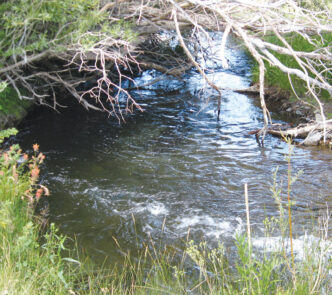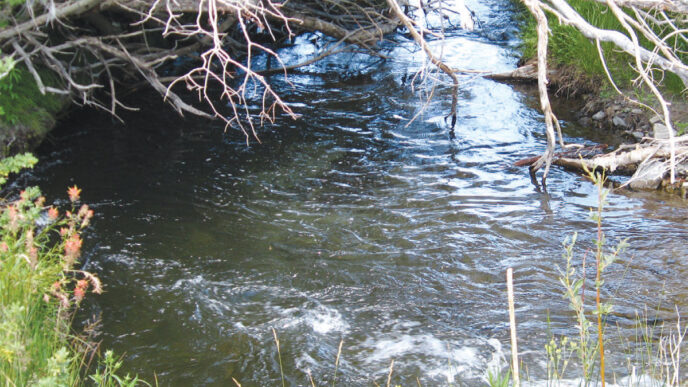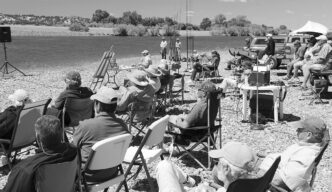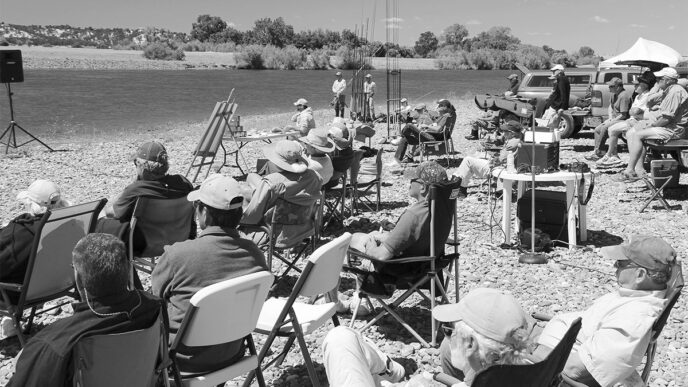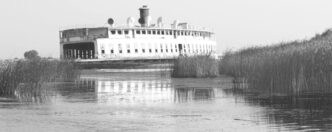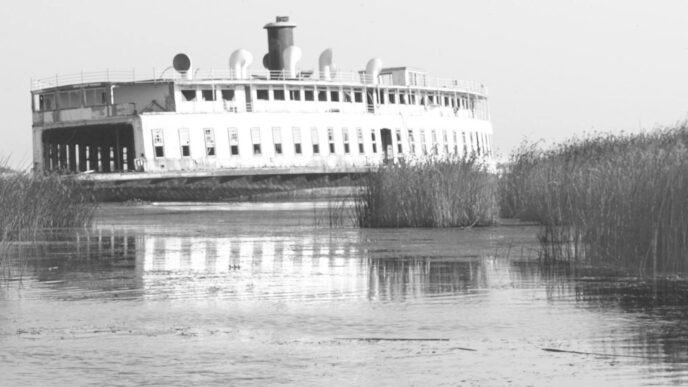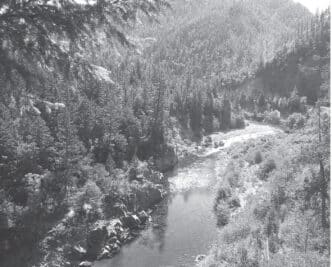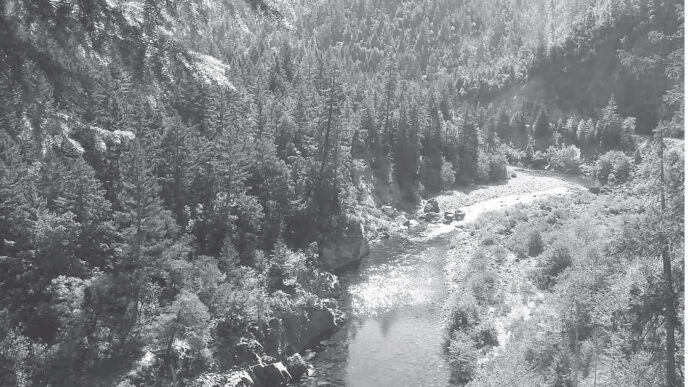Few state agencies are more complex than the California Department of Fish and Wildlife (CDFW), where some 2,100 employees work to protect the fish-and-wildlife heritage of a state with a population of 38 million residents and growing. Since becoming director of the department on September 6, 2011, Charlton “Chuck” Bonham has drawn praise for being a skilled facilitator, juggler of issues, and voice of the department before its policy-setting partner, the California Fish and Game Commission. Prior to accepting the top CDFW post, Bonham worked as a senior attorney at Trout Unlimited for 10 years, including an 8-year term as the group’s California director. Bonham, 45, received his law degree and an environmental and natural resources law certificate from the Northwest School of Law of Lewis and Clark College in Portland, Oregon. Before TU, he worked as a Peace Corps volunteer in Africa and as an instructor and guide at an outdoor center in North Carolina. He also served on the board of the Delta Conservancy, a state agency charged with conserving, sustaining, and enhancing the Sacramento–San Joaquin Delta. California Fly Fisher editor at large Tom Martens caught up with the busy Bonham for an interview in his office.
Martens: Let’s get down to the most important question first. Have you fly fished since you’ve headed the department?
Bonham: The answer is yes, but it’s a lot less than I used to before taking this job. It’s been mostly opportunistic. I made it a habit of fishing over in the eastern Sierra a couple of times, because we had commission meetings there. I got over there last year for the trout opener, because the local chamber of commerce asked me. In the past, I’ve spent a lot of time fishing on the Truckee River system and the upper Sacramento River.
Martens: Shortly after being appointed as director, you and your wife had a baby boy, who you’ve named Charlton. Have you bought him a fly rod yet or taught him to cast one?
Bonham: I haven’t bought him a fly rod. What I’ve done is get a plastic fishing rod that comes with plastic fish that have big smiles on their faces. Each evening for bath time, I fill the bathtub, and we go fish in the water. I keep asking him: “So you want to go fishing?” He keeps saying “Yes.”
Martens: In an interview in the San Diego Union Tribune, you said the director’s position is close to being your dream job. Do you still think that’s true?
Bonham: This is a dream job. I get to work with a great group of people and go fishing. The mission is awesome, and I am a great believer in this governor. I want my son to experience the beauty of the state like I have. The pleasure is, that’s the job of this department.
Martens: I recently wrote two columns on conservation success stories in California. The department’s Heritage and Wild Trout Program seems designed to protect habitat and species and to enhance the outdoor recreation experience. Is the program one of the department’s successes?
Bonham: I do believe it’s a success story and one that your readers at California Fly Fisher should care about quite a bit. Since the program was created in 1971, the department recommended and the commission approved designating 44 wild trout waters — streams and lakes — in the state, which means that they are managed for a sustainable wild trout population. Ten of these waters have been designated as Heritage Trout Waters since that program was created in 1998.
Martens: Any other trout success stories?
Bonham: We got the Paiute cutthroat restoration project done. This may be a place — Silver King Creek, in Alpine County, south of Lake Tahoe — where you literally can do every action in a federal recovery plan and then move to delist a native Western trout. If we can do this, it will be the first time in the country that we will delist a native Western trout. That is the antidote to those who argue the Endangered Species Act does not work. The Paiute cutthroat is one of the rarest fish in the world. We faced constant collateral litigation opposing the project, which, as you know, included rotenone treatment. Since I’ve been director and because of the leadership of Stafford Lehr, our fisheries branch chief, we have fought all that litigation and finally prevailed, and this past summer, we authorized our staff to come together and do one of the most ambitious projects. And we got it done.
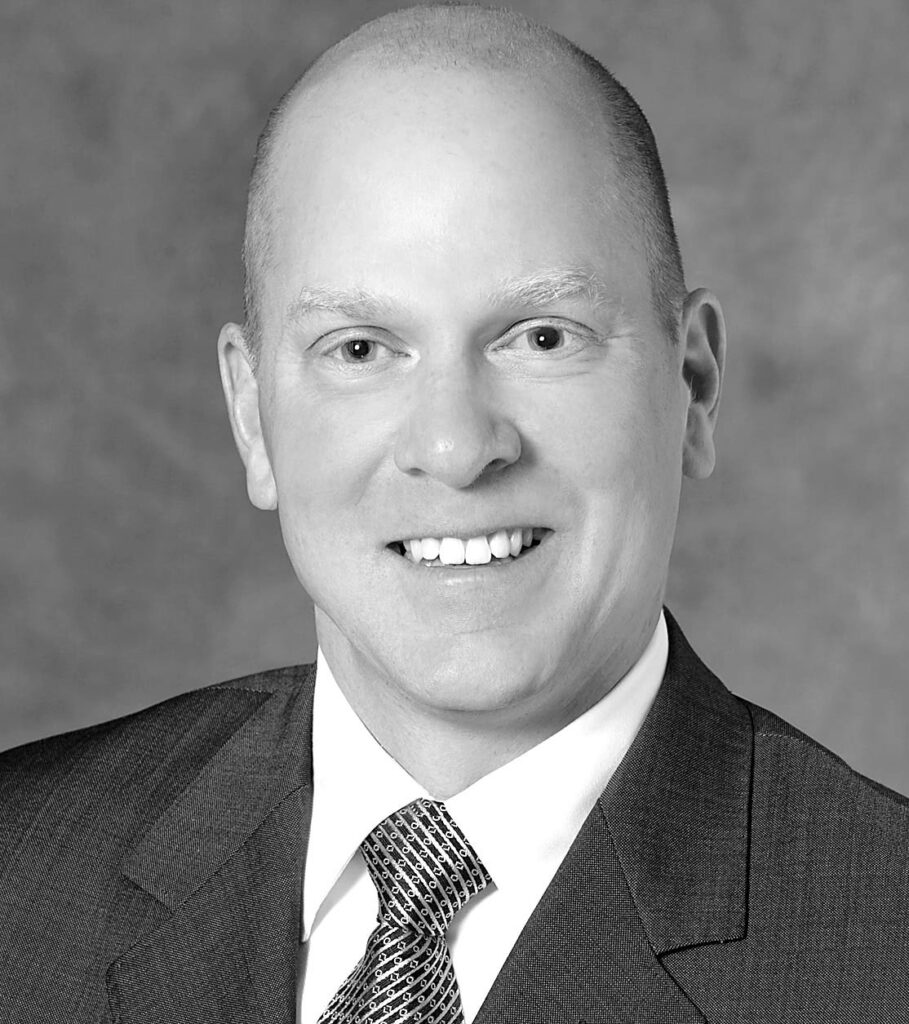
Martens: Speaking of successes, the Heritage Trout Challenge seems like a unique way to increase awareness of native trout and their historical drainages. What has been the response to that program?
Bonham: If you talk to Roger Bloom, Dave Lentz, and all the folks who are awesome trout warriors in this program . . .
Martens: Roger is the program leader for the Heritage and Wild Trout Program, and Dave is the native trout coordinator at the department, right?
Bonham: Yes, that’s right. They said that when they suggested the idea of the Heritage Trout Challenge and went to the International Sportsman’s Exposition show, they got a lot of blank stares. But years later, we now see people walking around saying “I got number 98” and that they met number 93, referring to their challenge certificate numbers. The prospect of making our anglers enthusiastic about fishing and also about conservation is at the core of our mission.
Martens: Have you participated in the Heritage Trout Challenge?
Bonham: I have not done it. It’s a great idea, and it would translate into your first question about whether I’ve fished much since becoming director. As fish-and-wildlife director, I have responsibility for the challenge, so I should go out and fish it. I think I will. It would help me get out in the field more.
Martens: When you go after those heritage trout, you might come across a marijuana growing operation along a river. As you know, for the safety of anglers, it’s a big and increasing problem and also results in habitat loss. The governor’s proposed state budget adds 68 new staff positions for your department. Will some of them be working on the marijuana issue?
Bonham: There’s a $1.7 million allocation in that proposed budget for the department to hire seven new staff positions to work on the marijuana issue. So it’s an acknowledgement that natural-resource damages from the production of marijuana in this state are real and must be dealt with. And our department is the logical entity to start to manage that concern. Cleaning up these sites, the remediation cost, is large, although it varies. Part of securing marijuana revenues is our ability to prosecute cases against responsible parties, either on public or private lands, which new staff will be able to do.
We believe that these activities require permits. They are altering streambeds. They are potentially dewatering streams, and they are impacting endangered species. The members of the California Forestry Association have to come to us to get permits when they are growing trees. The marijuana community needs to come get permitted so we can talk about mitigation responsibilities.
Martens: A recent planning effort called for the department to do a better job of educating and communicating with its constituents. Until a few years ago, the department sponsored an annual salmon festival that drew some twenty thousand people to the Nimbus Hatchery in Rancho Cordova. The department abandoned that support. Any thoughts about returning to sponsoring festivals for public outreach and education?
Bonham: The department needs to do a better job introducing ourselves to all of you. We are on that path. In just the last two years, we have expanded our Fresno office with festivals, using our hatchery there. We are really putting a premium on using the Nimbus Hatchery as a way to bring youth in the greater Sacramento community in to see fish — some seeing them for literally the first time. Over at our Hot Creek Hatchery, near Mammoth, we held a trout festival last year. We also just took part in the San Joaquin River Day event. So, yes, we are using events like these to advance the strategy of introducing ourselves and building the next generation of conservationists.
Martens: The state legislature changed the name of your agency from the Department of Fish and Game to the Department of Fish and Wildlife, presumably to reflect the agency’s broader constituency and the enormous growth in wildlife enthusiasts who don’t hunt or fish. Was that the rationale for the name change?
Bonham: The rationale I heard, which makes some sense, is there are 38 million Californians, and there are 36 million who don’t hunt or fish. They connect better with the word “wildlife” than with the word “game,” and the department’s future is better positioned if it’s able to express itself more fully to a broader segment of our population.
Martens: With that in mind, has the department set policies to reflect this interest in “nongame” activities, in addition to its traditional hunting and fishing work, besides the name change?
Bonham: The most important question to me on the name change is whether it reflects some sudden shift in perspective at the department. I don’t think the new status supports those who argue that changing the name means we care less about hunting or fishing. I think only 12 or 13 agencies in the 50 states have “game” in their title, and some of the states most committed to hunting and fishing opportunities out there have made this change to “wildlife” in the name. Texas is the Parks and Wildlife Department. Montana is Fish, Parks, and Wildlife. Oregon is Department of Fish and Wildlife. So while I understand the worry that the name change represents some new policy direction, I don’t think the facts support that.
Martens: The department’s hatchery system has been under fire in recent years from all sides — lawsuits from conservationists challenging the planting of hatchery fish over wild trout populations and the environmental impact of the entire program. Others are concerned about any possible reduction in the number of fish planted by the department’s hatcheries. How are hatchery policies and practices being changed to meet the new legal and practical demands?
Bonham: Our hatchery system is an issue in which a lot of anglers have had a concern. They said, “Here comes Bonham from Trout Unlimited. He will pivot hatchery policy on its head, and we will lose out on angling opportunities.” I actually think there’s a way to achieve multiple outcomes. If you take a look at the counties of Alpine, Mono, and Inyo, it’s not true that hatchery production is going down. In fact, production is going up. In 2011, we planted about 2.2 million fish in those counties. In 2012, we planted 2.8 million, and in 2013, we were predicting we would plant 3.06 million. So I don’t think we have lost angling opportunities.
At the same time, we have modernized and reoriented our perspective. We are running the world’s largest hatchery program, and for years, the department said we would self-exempt ourselves from environmental review. That’s not representative of the diversity of this state. It’s true scientifically and ecologically that if you put nonnative fish in spots where you have native species, you can create problems such as predation and competition, so the department itself prepared a programmatic Environmental Impact Report under CEQA, the California Environmental Quality Act, for our hatchery system. We went through that, and it has survived legal challenge. Now we are in a position where we have thought about our hatchery program, and we are better able to make these kinds of management decisions, such as: Where should we be putting fish? Where are those places in the state where we shouldn’t — ecologically? Where do we want to put them? But we should take a careful look at how we are doing it. And it’s forcing us to be more thoughtful about our decisions, and today — a couple of years later — we are right back to putting fish in the exact same places before the litigation, but we’ve done it more smartly and rigorously.
Martens: As our climate changes, the warming of streams will probably be less pronounced at higher elevations. Has the department considered focusing on these higher elevations — maybe to create reserves there to preserve and sustain fish, particularly trout Bonham: The Brown administration has been clear about understanding the risks of climate change in California. And the steps we need to be considering. That understanding translates into operational things, such as the budget that was released recently that has things that are good for our department. As an example, it has a $30 million allocation to our department from the cap-and-trade revenues to focus on wetland restoration. With regard to a warming climate and trout at higher elevations, my colleagues at Trout Unlimited used to talk about protecting the last best refugia, reconnecting refugia, increasing stream flows, removing barriers for fish, and restoring degraded landscapes. With some of that $30 million, we are going to go into the Sierra to work with all kinds of stakeholders to restore mountain meadows. Why? Restoring a mountain meadow is good for native trout and other species, but it also helps the Sierra become a better natural storage facility for water. It can lead to recharging groundwater basins and will increase the amount of cold, clean water running downslope into our major reservoirs. That’s administrative action through a budget that connects a lot of dots. It shows a commitment to trout conservation, a commitment to water conservation, and actually an adaption strategy in the context of a changing climate.
Martens: Are those meadow really degraded? Aren’t they mostly owned by the United States Forest Service? Is there enough work to do?
Bonham: Not all the $30 million would be used for meadow work. Among the other things we will be doing is working on restoring wetlands in the Sacramento–San Joaquin Delta, going out to coastal estuaries and doing restoration projects for a variety of reasons. Some of these estuaries are still home to great steelhead opportunities. Going out and restoring coastal estuaries gets you a sea-level-rise adaption benefit. In the Delta, doing habitat restoration in the right places can be very good for salmon.
Martens: What is the department doing to create the next generation of anglers and supporters of wildlife conservation?
Bonham: If you take a look at trout conservation, it ought to be a scary look for those who are serious about trout conservation in the state. I bet that for membership in the trout conservation organizations, age 50 is young, which ought to prompt the question where the next generation is. The next generation is going to come from the mother or father or grandfather or uncle or aunt who has taken the hand of a small relative or friend and walked them into the field to have the experience of catching a trout or in an urban setting in Trout in the Classroom to see what it looks like to raise a trout. Or to catch a trout in an urban pond, or take part in a trout fest at one of our hatcheries, or go into the field and have their first hunting experience. That positive outdoor experience is how you get the hearts and minds of the youth. And we need more Aldo Leopolds.
Martens: One of your first initiatives was to hold some one hundred townhall type meetings with department employees around the state. What did you learn?
Bonham: I heard a lot of concern, a lot of description of low morale. The people who work here are here because of our mission. They’ve got other opportunities, but they want to be at this place. And they just want to believe in leadership up here in Sacramento, that we are going somewhere and that we are making a difference. And more often than not, I would have staff come up to me afterward and say that they’ve never met a director. And that’s not right. I’ve seen a change in the staff since we started doing this outreach. I think morale is growing. So we are going to continue to have those conversations as long as I am director. We’ve done probably 20 podcasts to staff. We’ve created a suggestion-box pool where any person can honestly tell me anything that’s on their mind.
Martens: In recent years, department staff has been criticized for its lack of commitment to wildlife science. Was that still a concern in the field?
Bonham: We have a right-hand, left-hand problem. Some of our science staff does not even know what is being done within the department, which can’t be a recipe for professional development and a happy workplace. So we’ve created the department’s first-ever Science Institute, which has a dedicated spot on our Web site. We feature different scientists on a revolving basis. We’ve collected all of our most interesting published materials on topical areas. We’ve published our first-ever scientific ethics guidelines. We’ve published our first-ever peer-review scientific guidelines. This has all been organically driven by a steering committee that has leadership down to the first-level scientists, because the energy and desire was there. We’ve provided pay raises to our scientists. We got a relatively low-cost subscription to a service for scientific journals and gave them to our staff at no charge to their programs. We held our first-ever department science symposium in October of last year. We brought our younger scientific staff members who want to publish together with older staff who publish a lot.
Martens: Let’s look at conservation issues at a broader level. Many of California’s fly fishers are concerned about the long-term sustainability of our native trout and salmon populations, which face serious threats from an ever-growing human population and in particular from global climate change. What is your department’s approach to ensuring the survival of these species, and what challenges does your department face in implementing this work?
Bonham: The challenges that the department faces in conserving native salmonids are complex, but can be categorized into four basic areas, which are: financial (acquiring and managing funds needed to implement conservation actions), bureaucratic (moving through both the administrative and legal processes to implement projects), biological (understanding the most appropriate ecological pathway to recover/conserve salmonids), and environmental (conserving populations in the face of dynamic or significantly altered habitats).
The department is committed to and is actively establishing and implementing recovery plans, conservation strategies, and monitoring programs, along with adaptive measures that are critical to recovering and sustaining our native salmonid species. Populations of these species in the most populated areas of California and with the most pressure on water use are at the greatest risk — steelhead trout in the southern coastal counties and coho salmon in the greater Bay Area. We are also concerned about stocks of winter-run and spring-run chinook salmon in the Central Valley due to the very limited number of creeks in which they occur. However, in these cases, the department and partners are actually working on establishing additional populations, and those efforts should demonstrate results in the coming years.
The department now plans for recovery, restoration, hatchery management, and ocean and inland fisheries through the perspective of a changing climate. Some examples of this would be integrating habitat and water measurements into monitoring programs to track and detect temperature and water-regime shifts; reviewing and selecting restoration and enhancement priorities and projects for what they can attain in the near term, but also with regard to how resilient they may be to broad or specific alterations anticipated from climate change, which include increased flooding, increased periods of drought, carbon emissions versus sequestration, buffering capacity for human and natural communities, and so on; emphasizing water management and conservation and better understanding local hydrologies at regional and local scales and prioritizing areas for each species; developing and implementing statewide and regional action plans for extreme conditions such as drought, including rescue and translocation; contingency plans for hatchery facilities; local water-conservation actions (that is, off-channel storage and minimum in-stream flow protection); and genetic stock protection through conservation hatchery facilities.
Martens: That’s a nice summarization of your department’s strategic perspective. To bring this back to a grassroots focus, what can sport anglers do to enhance the effectiveness of your department?
Bonham: Two pretty obvious things come to mind. One, keep buying fishing licenses, and get your friends, children, spouses, and any family members involved in fishing. Again, I can’t stress how imperative it is for those who love fishing and hunting to bring these sports to the next generation. There’s a lot more to distract youths from outdoor activities.
Second, I’m a big fan of bringing something to the table. What I mean by that is I would rather have a group of people come talk to me and offer a suggestion on how to fix a problem or a concern. We’ve openly said regarding this drought that if anyone has ideas for conservation or how to go about getting people to help us keep as much water available for fish, we’re all ears.
Instead, it seems folks are stewing on something for a while, assuming they know what went wrong or why a decision was made, and then presenting the change to the department in the form of a lawsuit. Unfortunately, that’s happening all too often these days. On any decision I make, I get sued twice, once from those who say my decision was not green enough and once from those who say my decision was too green. In many cases, these aren’t people who came to the table with suggestions during the decision-making process. Taking the litigation route is costly, and those costs take away from the very resources we have available to protect fish and wildlife for use and enjoyment by the public.





